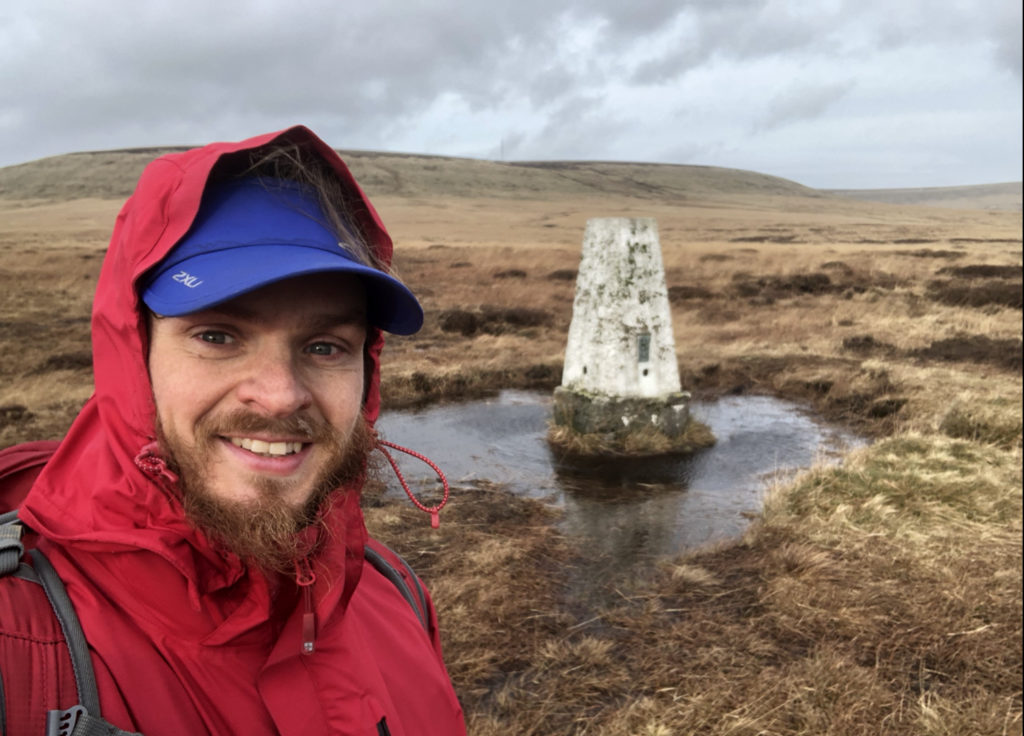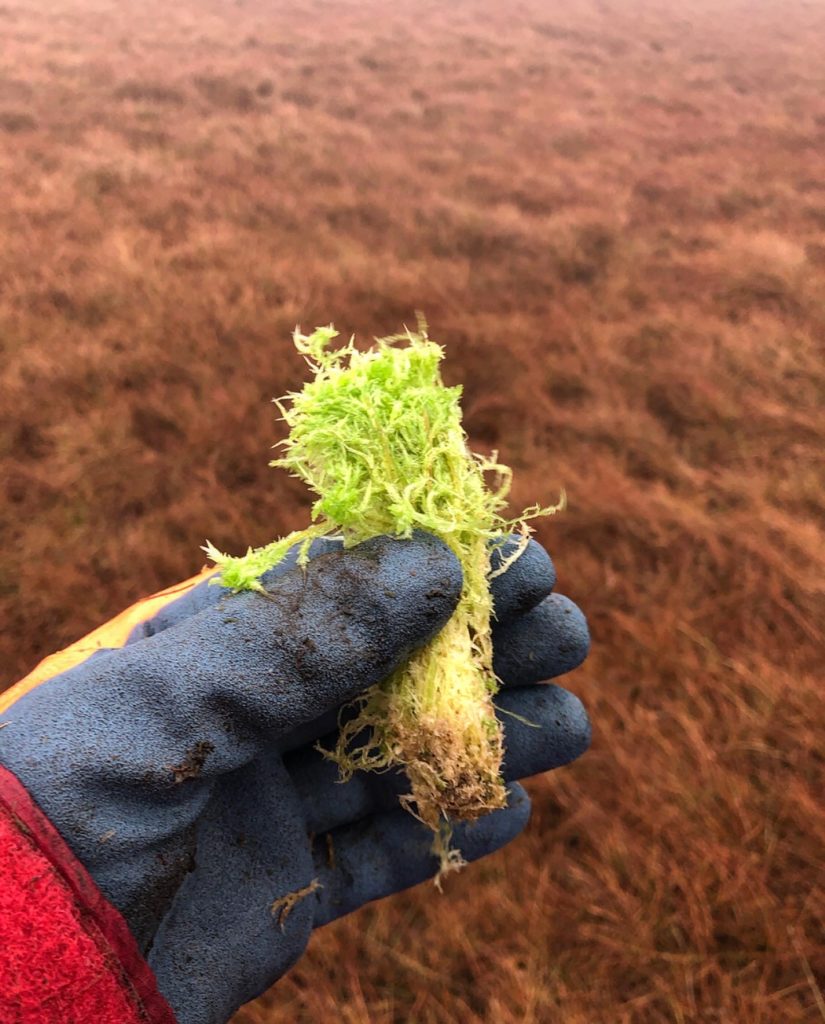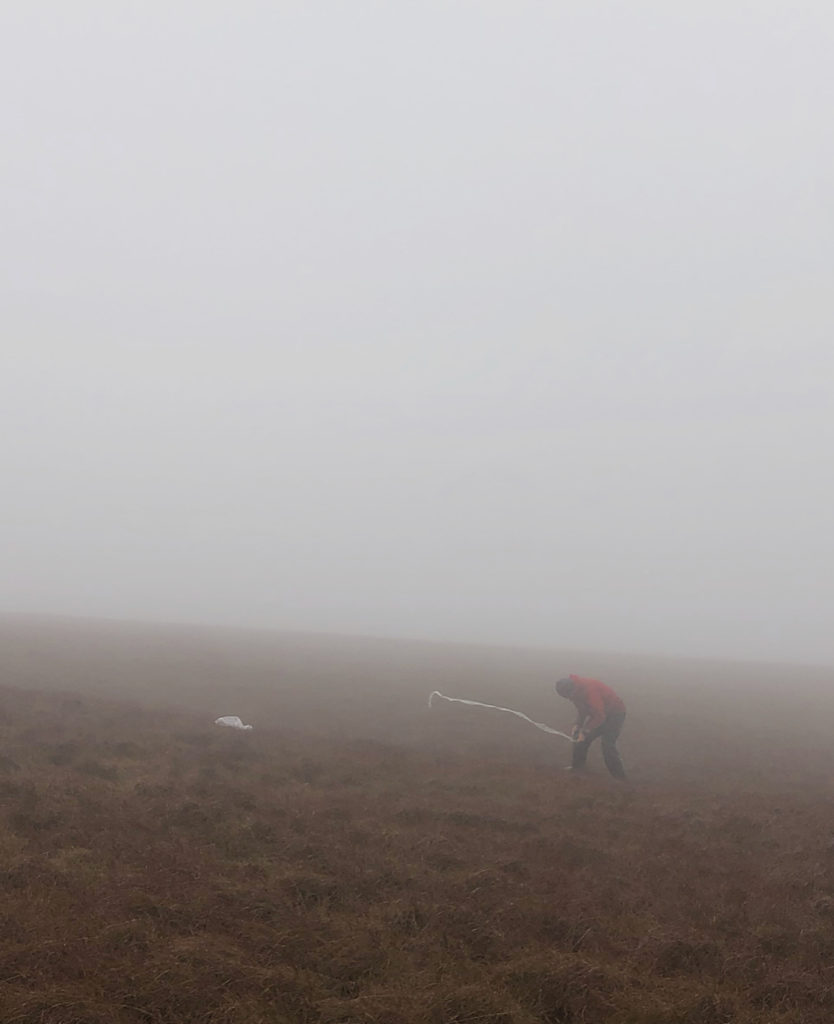18 February 2022
One of the big projects taking place before the spring is sphagnum plug translocation. The aim is to apply 10,000 plugs before mid-April when the bird breeding season starts. Further planting will commence again in late-July. These date restrictions are for the consideration of the breeding birds and are also legal conditions set out by Natural England, for operating the project within a SSSI.
The amount of plugging complete is limited by how many volunteers get involved so maintaining a large and loyal volunteer force is an important factor in achieving the site’s goals. Groups of staff and volunteers go up onto the uplands, ensuring that target areas are used using mapped polygons. Over several visits, we covered areas at Sliddens Moss, Roundhill Moss, Green Hill and Westend Moss. The areas are chosen based on various factors including prior restoration works and the viability of the conditions for sphagnum to establish.
The method of translocation involves stabbing a hole in the wet soil (with either a finger or dibber), insert a small sphagnum bundle into the hole and fill it back in, ensuring most of the moss base is buried and the top isn’t exposed in a way it could be blown away by strong winds. The insulated, waterproof gloves we were provided with were invaluable for this task, considering that conditions were cold and wet even on the mild days.
The sphagnum we are using was ‘lab grown’ in sterile conditions. This means that there is no need for a donor site to be adversely affected, to benefit this site. Another benefit is that the transfer is biosecure with no risk of disease or pests, however, I do wonder if the generic growing conditions and geographic origin of the specimens could have an effect on propagation success, compared to specimens adapted to local conditions from a nearby donor site. As long as the plugs we are using do propagate successfully, and there is plenty of evidence on site that they do, I think it’s the better option overall.
The weather on the first day of planting was grim. Strong wind and thick fog with visibility varying between 50-80m. This soaked us even though we wore full waterproofs. Some of us got quite cold during lunch break. One of the leaders had several spare jackets so he was able to give one to one of the volunteers who was uncomfortable. It would have been worth emphasising the need for wellies or waterproof socks prior to the workday, as there was a lot of walking through standing water and bogs, and the same volunteer was wearing low-cut hiking shoes. Fortunately, the conditions on the following days were relatively good, with some outstanding views across the hills.

Cake, pastries and vegan snack bars were provided at lunch. These were purchased by one of the RSPB staff that morning from a local bakery. This seemed like a good way to show appreciation, encourage volunteers to keep coming, and, in this case, implant a positive memory on an otherwise grim day.
COMMUNICATION
Over the past few weeks, I have noticed some volunteer management / communication issues which could be improved upon. I later discussed these points with the people responsible for volunteer management.
1. The instruction to meet at Holme Moss carpark was slightly inaccurate and they actually meant a different carpark nearby. On my first visit, it went to the wrong location. Phone signal was poor limiting us to text communication, but I eventually found the correct spot. Clearer instructions beforehand would have helped, such as providing a Google Maps link with the pinpointed location in the information email.
2. Providing a weather forecast link specific to the hilltop location would have helped the less experienced volunteer to prepare better. Weather forecasts and conditions are much milder in the lowland towns, so can be deceiving.
3. There was a volunteer who we thought was running late one day but had actually cancelled by contacting a different person at the RSPB who wasn’t with us. This information wasn’t passed on so three of us ended up waiting unnecessarily whilst the other four went ahead.
REFERENCES
Sphagnum plug translocations: https://www.moorsforthefuture.org.uk/our-work/our-projects/moorlife2020/conservation-works/moorlife-2020-sphagnum-planting



